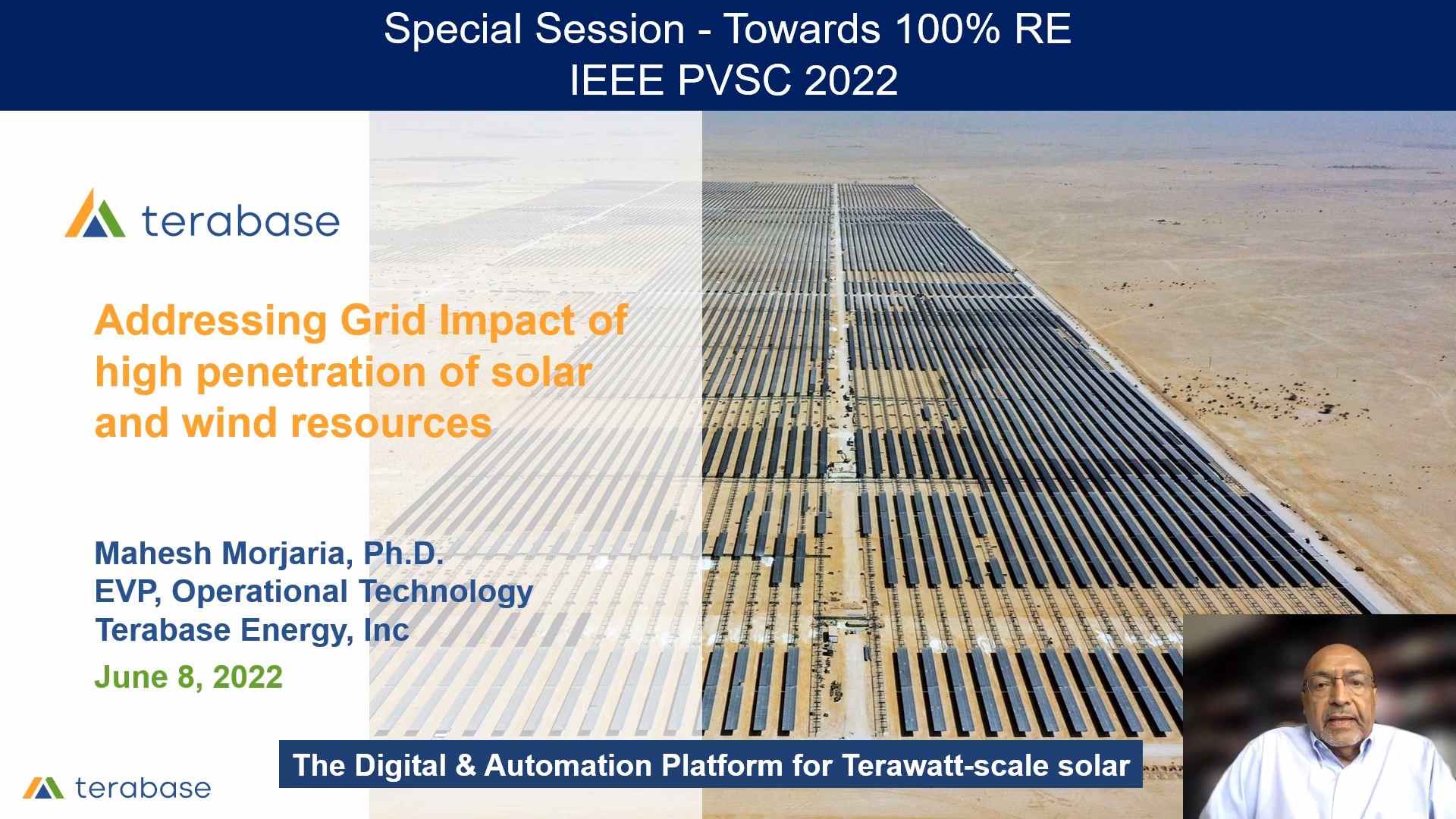
In this presentation, Mahesh Morjaria, Ph.D. (EVP of Plant Operational Technology at Terabase Energy) discusses the challenges and solutions for integrating high penetration of solar and wind resources into the electric grid, highlighting the importance of maintaining grid stability and reliability as renewables’ share in global electricity generation increases.
Key takeaways:
- Renewables, especially solar and wind, are expected to provide nearly 50% of global electricity generation by 2030 and 80-90% by 2050.
- High penetration of inverter-based resources (IBRs) like solar and wind poses challenges to grid stability and reliability due to their variable nature and lack of inertia.
- Grid-friendly IBRs, such as utility-scale PV solar, can provide essential reliability services and grid flexibility, which were previously provided only by conventional generation.
- Solar hybrid plants (solar + storage) can provide clean, competitive, and dispatchable capacity.
- Advances in grid-forming technology will enable the transformation from an analog, synchronous generator-dominated grid to a digital grid with better characteristics.
- Fast Frequency Response (FFR) from IBRs can address the issue of lack of inertia and help maintain grid stability.
- The future digital grid can be affordable, secure, reliable, clean, and resilient with an arbitrary mix of IBRs at any scale.